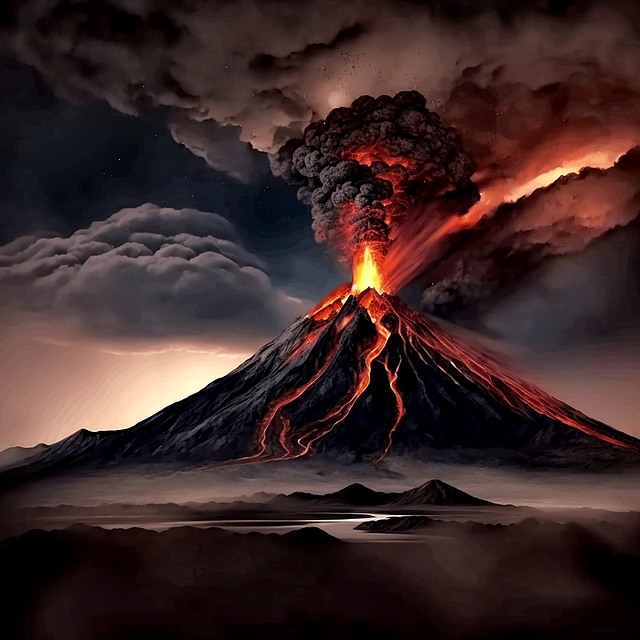Why Does the Indian Ocean Geoid Low or Indian Ocean Dipole Exist?

The Indian Ocean Dipole or Ocean Geoid Low has puzzled scientists and researchers for decades hence the question: Why Does the Indian Ocean Geoid Low Exist? Some factors that contributed to its formation include changes in ocean currents, variations in sea surface temperatures, and interactions with atmospheric circulation patterns like the Indian Ocean monsoon.
Although the specific reasons for the existence of the Indian Ocean Geoid Low are not fully understood, ongoing research is continually shedding light on the underlying mechanisms
The Indian Ocean Geoid Low is not just a random occurrence; it is a complex interplay of various geophysical processes and factors that have shaped the oceanic landscape in unique ways.
Tectonic activity, oceanic circulation patterns, gravitational anomalies, and the Earth’s rotation all play pivotal roles in shaping the Indian Ocean Geoid Low.
Each of these factors contributes in its own unique way, creating a complex tapestry of geophysical interactions that give rise to this fascinating feature.
As we unravel the mysteries of the Indian Ocean Geoid Low, we gain not just a deeper understanding of the Earth’s geophysical processes but also insights into the broader dynamics of our planet’s oceans.
Join us on a journey of discovery as we delve into the depths of the oceanic geoid and unlock the secrets of the Indian Ocean Geoid Low.
Significance of Understanding the Geoid Low
Understanding this enigmatic feature holds immense importance, not just for academic curiosity but also for practical applications in fields such as oceanography, climate studies, and even navigation.
Understanding Geoid and Geoid Low
What Makes Indian Ocean Geoid Low Unique?
The geoid, often described as the “true” shape of the earth’s gravitational field, represents a hypothetical global surface that coincides with the average sea level.
Its irregularity reflects changes in the mass distribution of the entire planet.
The Indian Ocean geoid low (Iogl) is the lowest geoid anomaly on Earth, and it is a circular geoid low located in the southern part of the Indian Peninsula.
The geoid coincides with the mean sea level and is controlled by the internal mass distribution of the mantle and its related surface and core-mantle boundary (CMB) terrain.
Therefore, the geoid is the result of internal mass defects in the mantle under the Indian Ocean. As India moved northward, the closure of the Tethys Ocean produced a large number of lower mantle plates under Southeast Asia (Van Hinsbergen et al., 2012).
These lower mantle plates may have disrupted the large low-shear velocity province (LLSVP) in Africa and produced an upwelling plume below the Indian Ocean (East et al., 2020).
The interaction of these processes in the Indian Ocean may determine the position and shape of the IOGL (Steinberg et al., 2021).
Concept of Geoid; Its Significance
A geoid low refers to regions where the geoid’s elevation is lower than the global average. These lows can provide insights into underlying geophysical processes and help unravel the Earth’s complex dynamics.
Historical Background
Early Observations: Pioneering Studies on Geoid Low
The fascination with geoid lows dates back centuries, with early cartographers and explorers noting anomalies in sea level and gravitational forces. However, it wasn’t until the advent of modern geodesy that systematic studies began.
The origin of this low geoid is mysterious. Different theories have been proposed to explain this negative geoid anomaly.
Uncompensated crust (Ihnen &Whitcomb, 1983), CMB deflection (Negi et al., 1987), the lower mantle plate (Rao &Kumar, 2014), the upwelling of the mantle due to the loss of water from the subducting Mesozoic plate (Spasojevic et al., 2010).
There is a thermal low-velocity anomaly deep in the middle and upper mantle (Ghosh et al., 2017) and the superposition of high and low speed anomalies in the Indian Ocean (Paul&Kumar, 2022; Rao et al., 2020; Steinberg et al., 2021) are all suggested as possible mechanisms.
All these studies focus on today’s anomalies and do not care about how this geoid lowland is produced. Previous studies using time-dependent mantle convection models (Nerlich et al.(2016) Advocated that the ancient back arc basin caused this abnormal effect in New Tethys.
On the other hand, the geoid predicted from the tomography model shows that today’s high-density anomalies play a minimal role in producing this negative geoid anomaly (Ghosh et al., 2017; Ghosh&Pal, 2022).
It is further speculated that the low-speed anomaly that caused the IOGL originated from a plume rising from the edge of the LLSVP in Africa, stretched due to the rapid northward movement of the Indian Plate (Ghosh et al., 2017).
This paper uses a mantle convection model that runs forward from the Mesozoic to today to study this statement.
Evolution of Understanding: Advancements in Geoid Low Research
Over the years, technological advancements have revolutionized our understanding of geoid lows. From rudimentary measurements to sophisticated satellite-based techniques, our ability to analyze and interpret these phenomena has grown exponentially.
Factors Influencing the Indian Ocean Geoid Low
Tectonic Activity: Role in Geoid Low Formation
The dynamic nature of tectonic activity in the Indian Ocean region plays a pivotal role in shaping the geoid low. Subduction zones, rift systems, and hotspot volcanism all contribute to the complex interplay of forces driving this phenomenon.
There is a “gravity hole” in the Indian Ocean place where the earth’s gravity is weak, the mass is lower than normal, and the sea level drops by more than 328 feet (100 meters).
This anomaly has plagued geologists for a long time, but now researchers at the Indian Institute of Science in Bengaluru, India, have discovered what they think is a credible explanation for its formation: magma plumes from the depths of the earth, just like the magma plumes that cause volcanoes to form.
To come up with this hypothesis, the team used a supercomputer to simulate the formation of the region, which can be traced back to 140 million years ago.
A recent study published in the journal “Geophysical Research Letters” detailed this discovery, centered around an ancient ocean that no longer exists.
Oceanic Circulation: Impact on Geoid Low Characteristics
The intricate patterns of oceanic circulation, influenced by factors such as wind, temperature, and salinity, exert a significant influence on the distribution of mass and hence, the formation of geoid lows in the Indian Ocean.
Gravitational Anomalies: Exploring Their Influence
Anomalies in gravitational forces, stemming from variations in the density and composition of the Earth’s crust and mantle, contribute to the creation of localized geoid lows.
Understanding these anomalies is key to deciphering the Indian Ocean geoid low.
Earth’s Rotation: Understanding Its Contribution
The Earth’s rotation introduces additional complexities to the geoid low phenomenon, as centrifugal forces and the oblate shape of the planet interact with gravitational forces to produce unique geophysical signatures in the Indian Ocean.
Geophysical Processes
Mantle Dynamics: Unraveling Its Connection to Geoid Low
Beneath the Earth’s crust lies the dynamic mantle, whose convective movements and thermal gradients influence surface topography and, consequently, the formation of geoid lows in the Indian Ocean basin.
Lithospheric Structure: Examining Its Role in Geoid Low Formation
The composition and structure of the lithosphere, including the thickness and density of the crust, play a crucial role in determining the distribution of mass and gravitational anomalies that contribute to the Indian Ocean geoid low.
Seafloor Spreading: Impact on Geoid Low Distribution
Processes such as seafloor spreading, associated with mid-ocean ridges and rift zones, contribute to the formation of geoid lows by redistributing mass and altering the gravitational field in the Indian Ocean region.
Case Studies and Observations
Indian Ocean Basin: Geoid Low Characteristics and Patterns
Detailed observations and measurements reveal distinctive characteristics and patterns of the geoid low in the Indian Ocean basin, offering valuable insights into the underlying geophysical processes at play.
Submarine Ridand Trenches: Insights into Geoid Low Features
The presence of submarine ridges, trenches, and other geological features further complicates the distribution of mass and gravitational forces, influencing the morphology of the geoid low in the Indian Ocean.
Satellite Data Analysis: Unveiling Geoid Low Variations
Utilizing satellite-based technologies, scientists can capture detailed data on variations in the geoid low across the Indian Ocean, enabling them to map its extent, depth, and temporal changes with unprecedented accuracy.
Global Implications
Climate Dynamics: Linking Geoid Low to Weather Patterns
The Indian Ocean geoid low has implications for regional climate dynamics, influencing factors such as precipitation patterns, atmospheric circulation, and the onset of monsoons, with far-reaching consequences for ecosystems and human societies.
Sea Level Rise: Understanding Geoid Low’s Role
As global sea levels continue to rise, understanding the contribution of geoid lows, including those in the Indian Ocean, is crucial for accurate projections and effective mitigation strategies to address the impacts of climate change.
Oceanographic Phenomena: Impacts of Geoid Low on Marine Environment
The Indian Ocean geoid low affects various oceanographic phenomena, including currents, upwelling zones, and the distribution of marine habitats, shaping biodiversity hotspots and influencing fisheries and coastal ecosystems.
Challenges and Future Directions
Data Limitations: Addressing the Gaps in Geoid Low Research
Despite technological advancements, significant gaps remain in our understanding of the Indian Ocean geoid, highlighting the need for continued investment in data collection, processing techniques, and interdisciplinary collaboration.
Modeling Techniques: Advancing Our Understanding of Geoid Low
Advanced modeling techniques, coupled with high-resolution data, offer promising avenues for further unraveling the complexities of the Indian Ocean geoid low, allowing scientists to simulate and predict its behavior with greater accuracy.
Collaborative Efforts: Importance of International Cooperation
Addressing the challenges posed by the Indian Ocean geoid low requires concerted efforts and collaboration among scientists.
Policymakers and stakeholders from around the world, emphasize the importance of sharing data, expertise, and resources.
Conclusion
In conclusion, the Indian Ocean geoid low is a multifaceted phenomenon influenced by a myriad of geophysical processes, including tectonic activity, oceanic circulation, and gravitational anomalies.
The Earth’s rotation and their Understanding its intricacies holds the key to unlocking valuable insights into our planet’s dynamic evolution.
As we look to the future, continued research into the Indian Ocean geoid low promises to expand our understanding of Earth’s complex systems and their interactions, paving the way for more accurate predictions and informed decision-making in the face of environmental change.









